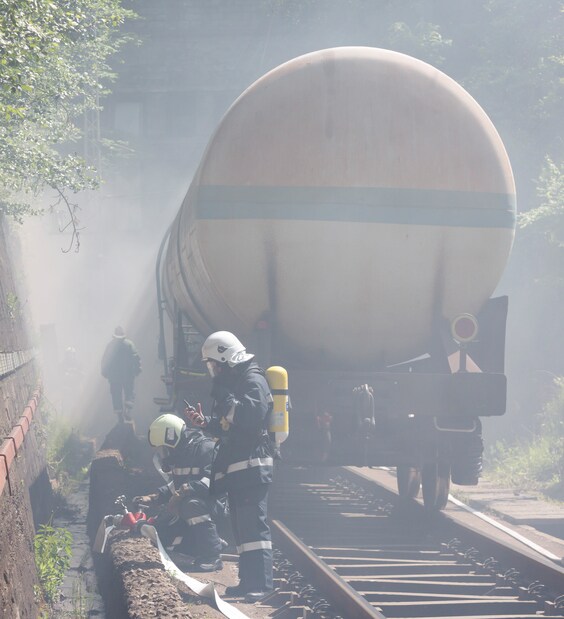 When a first responder hears “aliphatic hydrocarbons,” fuels, lubricants and waxes should come to mind. They can be found as gases, vapors, liquids or solids – and they make up many household and industrial products from baby oil to solvents to lighter fluid and kerosene.
When a first responder hears “aliphatic hydrocarbons,” fuels, lubricants and waxes should come to mind. They can be found as gases, vapors, liquids or solids – and they make up many household and industrial products from baby oil to solvents to lighter fluid and kerosene.
The main difference between the volatile solvents and nonvolatile oily liquids that contain only carbon and hydrogen is the length of the carbon chain. Many commercial solvents contain mixtures of several aliphatic hydrocarbon chains of varying length, which produce the desired commercial characteristic as the “average” of the mixture. That aliphatic hydrocarbon mixture identification can make a difference to the public and responder health, so it is important to know what the unknown substance is before cleanup happens.
Raman and FTIR spectrometers are two techniques used to identify aliphatic hydrocarbons; however they may produce several results since spectra for these similar items are nearly identical. (Two other methods include water solubility and flame testing.) This is an example of why complementary testing by FTIR and Raman is preferred, rather than putting all bets on a single technology. Currently, there is an instrument available that integrates both Raman and FTIR to provide complementary and confirmatory testing in a single, field-portable device.
Here are some tips on how to test aliphatic hydrocarbons using FTIR and Raman technology.
FTIR
When using a handheld FTIR instrument for chemical identification, place a drop of liquid on the test surface and test normally. If the sample is volatile and is evaporating a portion or the entire drop away before the test can finish, you need to find a way to keep it in place while the test runs. You can do this by placing a disk of clean, absorbent paper about 3/8-inch (1 cm) wide on the test surface after you’ve done a background scan. When ready to scan the liquid, start the scan while simultaneously wetting the paper with the sample from a pipette. Add more liquid sample as it evaporates; don’t wait for it to nearly dry. The idea is to flood the area between the test surface and the paper with plenty of liquid before lighter factions can evaporate. The paper will help hold the liquid on the test surface without making a mess. Do not exert pressure on the paper; doing so can cause the liquid to be forced away and the paper forced onto the test surface causing interference.
Similarly, liquid leaking through a cardboard box can also be tested. By cutting away a small portion of cardboard box that has been soaked by a leaking liquid container within, you will not have to initially open the box and dig down to find the leaking container before you have a preliminary identification.
Remember that the key to this test is to make liquid, not cardboard, contact the test surface of the FTIR. Use no pressure or just a little pressure from a gloved finger. FTIR sampling area is only 1-3 microns above the test surface – just the right thickness to cause capillary flow of your suspect liquid between the test surface and cardboard. Do not assume this result is representative of the liquid in the container since any lighter factions are probably already evaporated. Also, solid material may be settled in the container and only the liquid is leaking out (possibly labeled as “shake before using”). Use the preliminary result to help determine how you will gain access to the material inside the box and container.
(You can learn more about Fourier transform infrared spectroscopy in the FTIR Spectroscopy Academy section of our website.)
Raman
When using a handheld chemical identification analyzer utilizing Raman technology, place some liquid in a vial or point the laser into the liquid as long as there is at least 3/8-inch (1 cm) depth. Vial mode is favored because the instrument will be working hard to identify aliphatic hydrocarbons and there is less room for operator error, especially if contaminants are present.
You can try to identify the liquid that has leaked into the cardboard as well, but with some caveats. The wet cardboard may produce signal for cellulose. The instrument will need to sort out two compounds that are both producing weak signal. Additionally, dry (but not wet) cardboard can ignite in the laser. If your sample size is very small, as in the FTIR test, this should not be a problem as long as you are testing in a safe area. Move away from the bulk amount of suspect flammable material and use a combustible gas monitor in any suspected explosive or flammable environment.
(You can learn more about Raman spectroscopy in the Raman Spectroscopy Academy section of our website.)
⇒ Editor’s Note: The content for this article was provided by Houghtons, Inc., a small privately held company that provides training, test methods and technical assistance to public and private sector organizations responsible for emergency response. You can contact principal Rick Houghton at https://hazardid.com
For more unknown substance identification information, visit the Safety and Security Threat Detection section of our website.






Leave a Reply